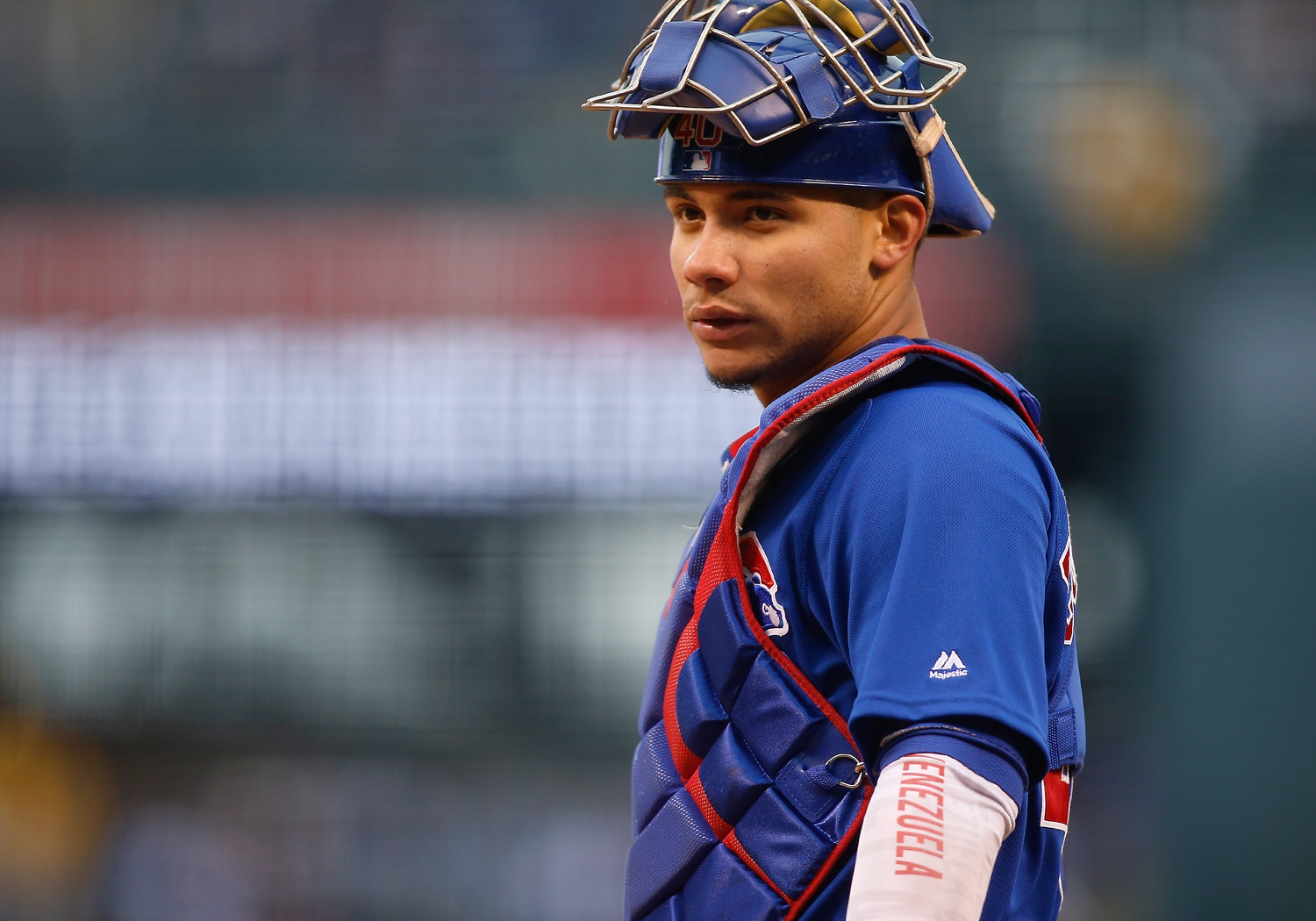If there’s one thing Chicago Cubs fans have been united in since the middle of the 2016 season, it is that they have one of the best young catchers in all of Major League Baseball. Entering the 2018 season that united front had shifted somewhat simply by removing the word young. Willson Contreras is still young, but ask just about any Cubs fan and at this point in time they will tell you he’s one of, if not the, best catchers in all of MLB. Through 22 games this season Contreras has given his fans little reason to doubt their belief in his abilities.
There are many positive aspects of the young Venezuelan’s game that I could choose to write about. His defense, his raw power, his high contact rate, the quick pace at which he’s become a leader on this team, and so on and so forth. Contreras and his prodigious bat flips could, and should, be a column all unto themselves. In every way possible (except maybe his framing), Contreras is a fun player to watch, and one who continues to impress with his overall level of play.
One area where Cubs fans are certain that Contreras is among the elite is in his ability to throw runners out. Whether it’s straight up throwing out base runners or picking them off the bases from behind; Willy gets guys out. In 2016 Contreras posted am SRAA (Swipe Rate) of -.039. 2017 was Willson’s first full year in the major’s, and he regressed somewhat, with an SRAA of .022. This year the Cubs starting catcher has been the definition of average at .000. Still, as his career progresses Contreras will find some sort of happy medium when it comes to his ability to throw out opposing runners. Or, he’ll continue to progress like the elite athlete he has shown himself to be up to this point.
Either way, SRAA is not the reason I want to write about the 25-year-old Contreras today. A stat that has always fascinated me is that of Pop Time. Essentially Pop Time is the measurement of the moment the ball hits a catcher’s glove until the moment it is where the fielder should catch said ball. This is a stat where info has not always been readily available. However, thanks to Darren Willman at Baseball Savant, any savvy baseball fan can now look at Pop Time and see where any catcher in the league ranks.
I’ll admit to some hesitation when digging into this topic. The part of me that still believes in the eye test (that part of me is never going anywhere folks) was convinced that I would find Willson Contreras listed near the top of the Pop Time leaderboard. The critical thinking part of my brain had other ideas, surely this was when one of my new baseball heroes would fall amidst all the data?
2016, only the second year that Pop Time data is available on Baseball Savant, Contreras was 11th among all catchers with a minimum of 15 attempts at second base (the occurrence of throws to third base is far too infrequent and not being included in the overall dataset). His Pop Time in 2016 was 1.96. That had him tied with Yadier Molina, and just behind the best time of 1.90 set by the New York Yankees’ Garry Sanchez.
His second year with the Cubs and first full season saw the enthusiastic Contreras improve his Pop Time to 1.95. This ranked him 9th out of all qualified catchers. The league leader in 2017 was Austin Hedges of the San Diego Padres, with a 1.89. If it seemed like Contreras was faster behind the plate in 2017, you’d be correct in thinking as such. The main reason for this was a slight increase in arm strength, from 86mph to 87mph. Contreras’ ability to get the ball from his glove to his throwing hand, or exchange rate, remained a steadfast 0.73 seconds.
For 2018 the minimum needs to be adjusted a bit, the reason being that Contreras has only appeared in 22 games and teams aren’t running on him all that much. If the minimum is moved to five attempts, Contreras is 22nd out of 23 qualified catchers. That number frankly doesn’t matter all that much, the sample size is just too small. However, what is slightly concerning is that on the whole Contreras has shown some serious regression in the young season. His arm speed has dropped to 84.8mph, with an exchange rate of 0.83 seconds. That’s almost three miles per hour less in arm strength, with his exchange rate dropping an entire tenth of a second. This has resulted in a Pop Time of 2.11 for the Cubs youngster.
The caveat is, obviously, that it’s way too early in the 2018 season to draw a lot from Contreras’ Pop Time numbers. But, I would caution Cubs fans that though the size of the sample may be small, this is a stat to keep an eye on as the year progresses. Other teams will see this data, and if it continues to look the same the Cubs could see an uptick in teams attempting to steal on Willson. As this happens, Contreras’ current Pop Time numbers will either be revealed as a true regression, or teams will quickly find out that it is just a small sample size issue. I tend to lean on the side of it being a sample size issue, but having Pop Time data readily available and being able to watch this unfold in real time will be a lot of fun. Come the end of the year I fully expect Contreras to be back near the top of the Pop Time leaderboard. If he isn’t, well, at least we know where his problems started.
Lead photo courtesy Russell Lansford—USA Today Sports
